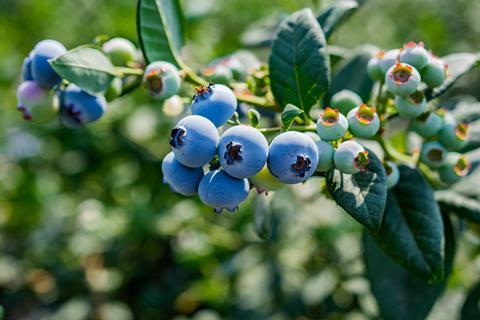Improved genetics and better agronomic management “key” in overcoming climate stress says Dr Prometeo Sánchez
A leading plant nutrition expert has highlighted the vital role of new genetics in helping blueberry producers deal with today’s increasingly challenging climatic events.

According to Dr Prometeo Sánchez García, professor at the Colegio de Postgraduados and specialist in plant nutrition, researcher and advisor to agro-export companies in Peru and Mexico, among other countries, 2023 was a huge challenge for blueberry producers in Peru, who experienced a considerable drop in exports.
The poor yields were not only due to climatic factors, but also to agronomic management, he said.
“In 2023, the El Niño phenomenon, with high temperatures and rainfall generated favourable climatic conditions for the vegetative development of some blueberry varieties, which, together with the daily management of nitrogen (75 per cent ammonium and 25 per cent nitrates) after pruning, increased the problem of vegetative development, causing delays in flowering and even the absence of flowers,” Sánchez explained.
In the current 2024 campaign, he indicated that the opposite seems to be happening: “This year, the El Niño phenomenon with high temperatures and no rain is generating strong stress in most of the varieties in Peru, causing dehydration and even death of the apical meristem,” he said.
In this scenario, Sánchez stressed that adaptability and a good choice of varieties is a fundamental factor in facing the challenge. “The genetic factor is essential. It is very important to opt for varieties with greater tolerance to water stress, because the interaction of unfavourable climatic factors such as high temperatures, low relative humidity and high radiation translates into water stress for the plants,” he continued.
Another key factor, according to Sánchez, is “stress mapping to design variety-specific climate stress management programmes through bio-stimulation and investment in infrastructure”.
In addition to the aforementioned tolerance to water stress, Sánchez considers that “the varieties that have greater stomatal density in the leaves tolerate climatic stress better”.
Taking these factors into account, his opinion is that Planasa varieties offer a good alternative: “In Peru and Mexico, in conditions of extreme climatic stress, of all the varieties on the market that I have had the opportunity to observe, the ones that have shown the best behaviour have been Blue Madeira, Blue Manila and Blue Maldiva,” Sánchez said.
According to Planasa, these evergreen varieties have a zero chilling hours requirement, which allows them to adapt to tropical climates without chilling hours and gives them a unique ability to withstand unfavourable climatic conditions and even enhance their characteristics.
Sánchez said: “Growers are still looking for aspects such as yield per plant, berry size, flavour (Brix/acidity ratio), firmness and bloom. The latter is also what the end consumer fundamentally demands.
“The future lies in the development of varieties with higher yields, better fruit quality, tolerance to climatic stress and phytopathogens”.



